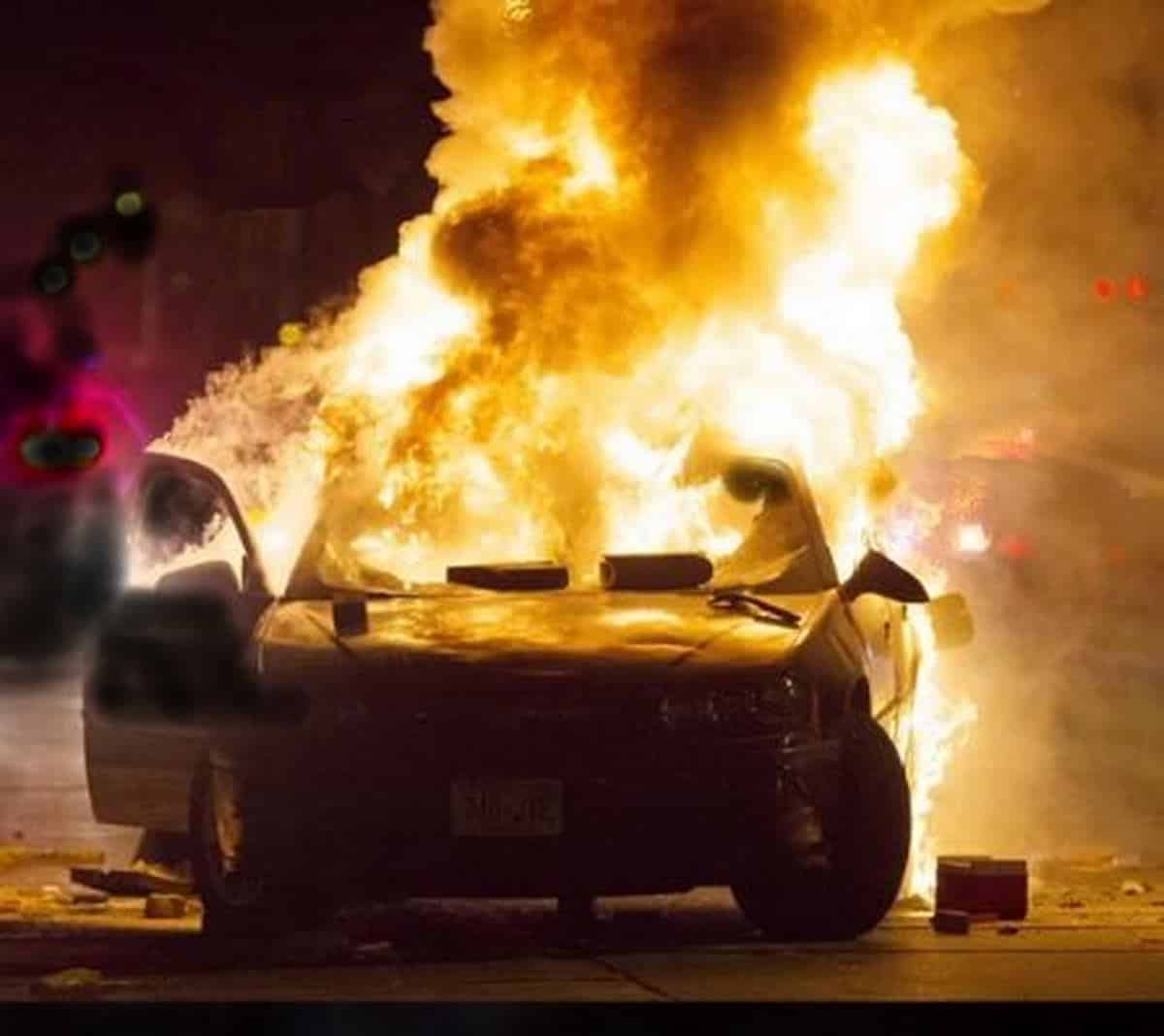
Recently, several men mostly and mostly black men, including Michael Brown, Freddie Gray, Terence Crutcher, and Keith Scott, have died under controversial circumstances when confronting the police when arrested, approached, or detained. In most jurisdictions, the use of deadly force is justified only under conditions of extreme necessity as a last resort, when all lesser means have failed or cannot reasonably be employed, as this non-legal layman understands. So, when there is imminent and significant threat of death or great or serious bodily harm or injury, in most states and jurisdictions, an appropriate deadly-force response may be viewed as necessary, by both civilian and non-civilian folks. Of course, the factors and variables of the situation are of paramount importance. My non-attorney understanding is that deadly force by sworn police and law enforcement officers is usually lawful when the officer “reasonably” believes the subject poses a significant threat of serious bodily injury or death to themselves or others. Also, I think, as a layman, it is lawful when used to prevent the escape of a fleeing felon when the officer believes escape would pose a significant threat of serious bodily injury or death to members of the public. So there are established laws and guidelines to follow.
Of course, each unique situation has its own set of facts and variables… and subjective and emotional opinions and interpretations from several folks with different agendas and motives to consider. It is very difficult to know someone’s actual intentions… anytime. I believe that all or the large majority of police officers in the United States have a righteous motive to uphold the laws and have good intentions to serve and to protect. Of course, their lives are at stake every day while performing their duties and they are aware of that. There are many considerations in any deadly-force situation. Was a lawful command actually given? Like “Put your hands up in the air!” “Drop the weapon!” “Stop right there. Do not move!” “Get down on the ground!” Many questions to answer. Could you actually see that he clearly had a gun in his hand? What specifically made you believe that your life was threatened and that you had to shoot to protect yourself? Did you have any other alternative or option? Was that a “reasonable” action, given the circumstances? There is that word “reasonable” again. We all know that what is reasonable for one may not be reasonable for another. But the U.S. Supreme Court defined that clearly in a particular Graham v. Connor 1989 case ruling. The Supreme Court expanded its “reasonable” definition to include an “objective reasonableness” standard, to avoid subjectivity. They expanded the standard definition to not be subjective as to what the officer’s intent might have been. Clarifying that reasonableness must be judged from the perspective of a reasonable police officer at the scene, and that its calculus must embody the fact that police officers are often forced to make split-second decisions about the amount of force necessary in a particular situation. But, we know how difficult it is to generalize and implement seemingly clear and distinct words. There are unplanned furtive movements open for interpretation, nefarious acts, and disparity of force factors, as my previous articles explain.
Following deadly shootings by police officers, several police departments in the United States are looking into new and more safe lethal-force training approaches for officers and those involved, to augment body cameras which may not present clear and irrefutable evidence. Particularly, an approach about how to de-escalate emotionally charged confrontations. It is not fair nor appropriate to conclude that there are rogue, trigger-happy cops who do not know what they are doing and who are poorly trained. Respect begins with an attitude and proper training, usually in the home environment. The proper response does not include looting your neighborhood stores.

Police officers are trained to avoid the use of deadly force, unless lives are in danger… unless there is risk of death or great bodily harm. It is one thing to train police officers how to properly use a gun, but another to train them what kind of factors apply for using deadly force. After reading several of these recent cases, it is my opinion that those who were involved in these controversial situations were shot because the police officers perceived an imminent threat of death or great bodily injury if they did not use deadly force to stop it. Of course, whether or not this perception in each case was “reasonable” under the law remains to be understood. Sergeant Joe Friday on Dragnet the television show was correct. The facts ma’am, nothing but the facts. However, the facts of the circumstances are often blurry and not readily apparent. That uncertainty and lack of clear cut facts, motives, and actions are what make these deadly and instantaneous confrontations so scary, emotional, debatable, and challenging. In these quick, terrible situations, trying to second guess behaviors of everyone involved is a luxury after the occurrence. Perhaps, a pre-determined and accepted general mindset up front before the encounters occur would help derail some of the negative reactions, behaviors, and deadly consequences after the incident. Maybe for all involved being very conservative, pro-active, and cautious is a must. After all, we are talking about LIFE and DEATH situations here. Also, accepting that anyone involved with a police officer must obey ALL commands and directions of the police officer is critical. Even if you do not agree with the arrest, detainment, or questioning, having respect in general for the uniform and the job police officers are required to perform is very important. Law and order must prevail concurrent with respect for all parties. The facts and actions of the conflicting situation and encounter can hopefully be sorted out later safely in a court of law or privately between parties.
It is my opinion that they all or most of the individuals killed in the recent encounters with police would be alive today if they had just followed the lawful directions and commands of the police officers who were trying to question, arrest or detain them. So very sad and perhaps a harbinger for events to come, sadly! The police were doing their job and duties. To me, it makes sense that these men were probably not shot because they failed to follow police commands and directions, but because of the imminent death or serious bodily injury actions which were threats they overtly demonstrated to the police. The basis of most of these threatening actions probably stemmed from their deep-seated mindset against the police establishment which sparked their revolt against authority. This is largely learned from parental influence or lack of it. So, a furtive movement can get you killed. Of course, failure to comply does not justify shooting someone. Although the facts must speak for themself in each different situation, every attempt should be made first by all involved parties to de-escalate any confrontation to avoid the use or involvement of deadly force. Lives are at risk and not just those lives of the officer and the individual shot, but families and innocent bystanders.
Recently, Betty Shelby, the Tulsa Oklahoma police officer who shot Terence Crutcher, has been charged with first-degree manslaughter for the fatal shooting of an unarmed black man and booked into jail. The Tulsa County District Attorney’s Office found she “reacted unreasonably” and became “emotionally involved to the point that she overreacted.” So, the case is working its way through the justice system, where a jury will likely decide whether offcer Shelby is guilty of the crime.
Another recent situation involved the shooting of Keith Scott in Charlotte-Mecklenburg North Carolina. There are several videos of the shooting, including a police dashboard camera and an officer’s body-worn camera, in addition to other evidence. Police Chief Kerr Putney remains adamant that Scott was holding a handgun when he was shot. A video of the incident shot by Scott’s wife strongly suggests Scott was indeed armed with a handgun as he exited his car. Officers can be heard repeatedly ordering him to drop the gun. Indeed, just before the fatal shots were fired, Scott’s wife can be heard saying, “Keith, don’t you do it!” It’s unclear in the video what the “it” was, but the woman’s reaction reveals her concern that Scott was placing himself in danger. He was, based on the video images. What can be seen clearly from the dashboard camera is that Scott exited his car and was backing away from it with his hands at his sides, but what, if anything, he had in his hands cannot be seen in either police video. The Charlotte-Mecklenburg Police Department released body and dash-cam videos of the fatal police shooting of Keith Scott. Chief Putney said while the videos show no “absolute, definitive visual evidence” that the 43-year-old black man had a gun in his hand, other evidence from the scene does prove it.
What started this encounter? Chief Putney said that Scott drew the attention of officers who were trying to serve an arrest warrant on an unrelated suspect at the apartment complex where he was because they saw him rolling marijuana in his vehicle. Police were going to continue on their original mission until an officer spotted a weapon in the vehicle, Chief Putney said. “It was not lawful for him to possess a firearm,” Putney said. “There was a crime he committed and the gun exacerbated the situation.”
Chief Putney said there is more information which includes accounts from officers at the scene, forensics and interviews with witnesses. He said he has found nothing to indicate that the police officer acted inappropriately, given the totality of the circumstances, and he does not think his officers broke the law that day. They were, he said, reacting to what appeared to be an imminent threat. “At every encounter, people can make a decision to follow lawful, loud verbal commands and avert some things like this,” he said.
Conclusions
In summary, police officers are trying to do the jobs they are trained to perform in a dynamic, complex environment. They are under a great deal of stress and pressure to make proper, instantaneous life-and-death decisions about using deadly force or not in unique situations. There lives are at stake, in addition to the lives of others. There is much situational uncertainty and people are unique with their own motivations, behaviors, interpretations, and responses to the same event. People behave in ways that make sense to themselves, not knowing what they do not know, while influenced by uncontrollable and controllable factors. What is reasonable to one is not reasonable to another. Laws exist and must be enforced. If people disagree with existing laws and procedures, the correct established channel should be followed to peacefully and calmly resolve the differences, which is not on the street in the mist of a fluid and dangerous situation. The solution is not to overturn and torch cars and loot stores in infantile, irrational, and emotional behavior to make a point. It is imperative that we all respect police officers doing their jobs to maintain peace and that we comply with their reasonable and lawful commands and directions. If we disagree, sort it out later, hopefully in an orderly process. Avoid instantaneous encounters on the street if at all possible, since that is not the place to analyze and determine complex objectives, disagree or interpret facts, exhibit disrespectful or aggressive behaviors, and decide unclear motives and facts. Understanding the need to develop and practice the proper respect for law enforcement officers, and to not debate on the street the lawful commands of officers who have the power to protect themselves in a life-threatening or great bodily injury situation, is critically important for everyone involved. A logical, rational, non emotional, orderly response to an uncertain and spontaneous situation with many variables is best for everyone. Avoid confrontations, but be prepared just in case.
Peace and Be Safe!
Photos by Author.
* This personal opinion article is meant for general information & educational purposes only and the author strongly recommends that you seek counsel from an attorney for legal advice and your own personal certified weapons trainer for proper guidance about shooting & using YOUR firearms, self-defense and concealed carry. It should not be relied upon as accurate for all shooters & the author assumes no responsibility for anyone’s use of the information and shall not be liable for any improper or incorrect use of the information or any damages or injuries incurred whatsoever.









